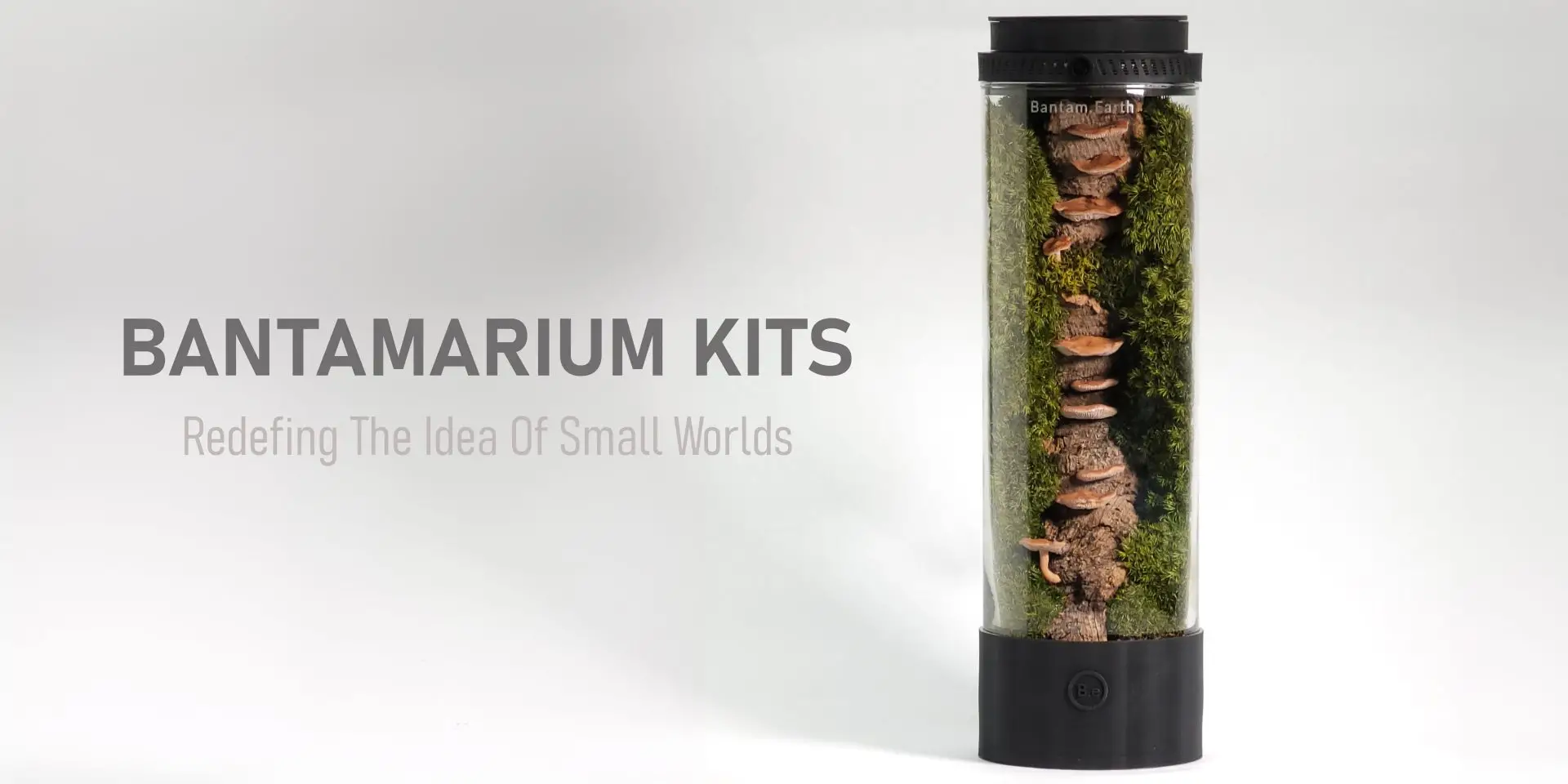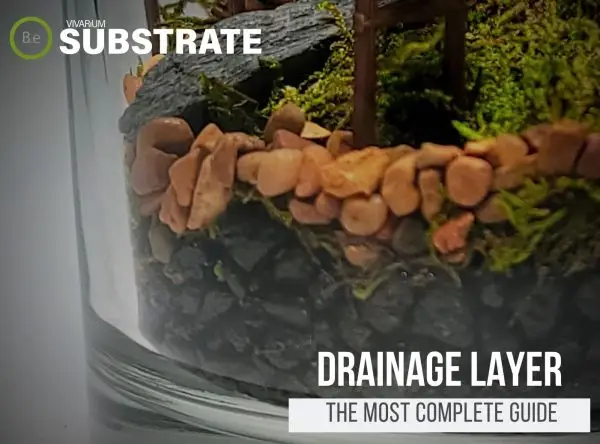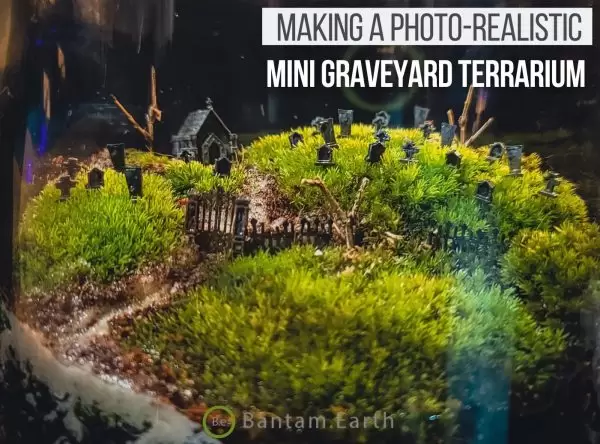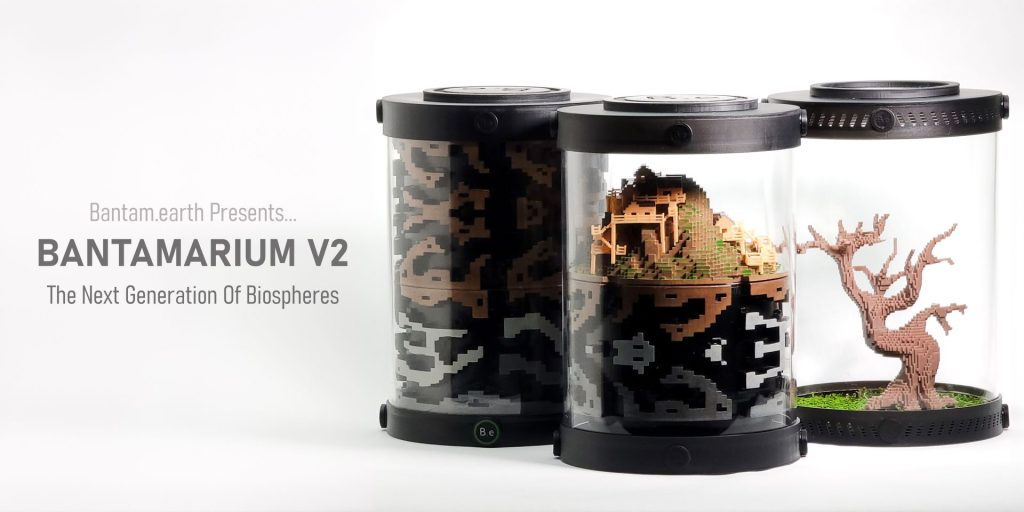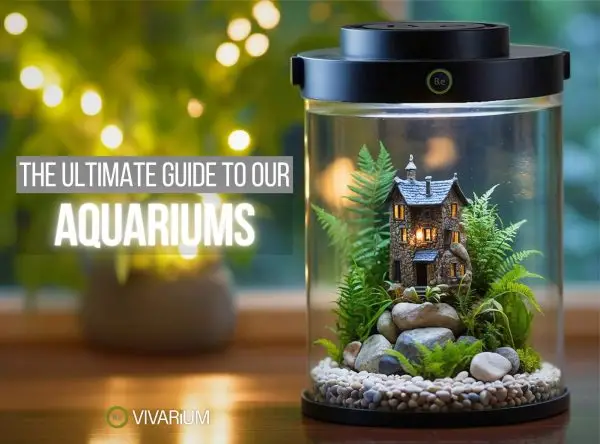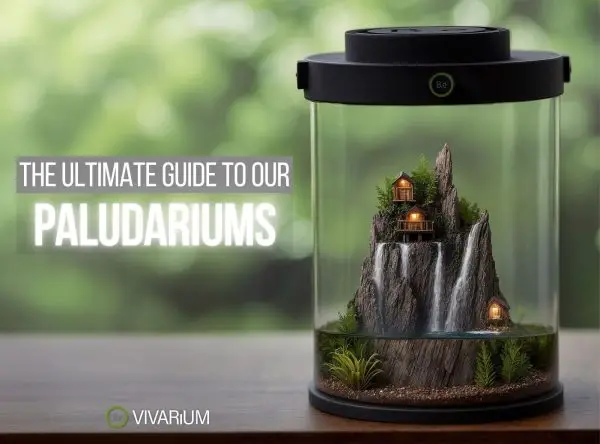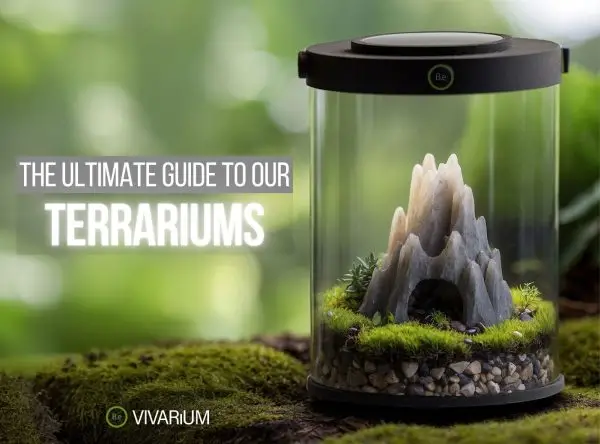Hello all, welcome back to another unique vivarium post! Before we dive into today’s topic, if you’re interested in exploring the latest innovations in vivarium design, be sure to check out our Bantamarium guide.
Now, since our terrarium post was so well received, we decided to take a deeper dive into the Mossarium a.k.a the moss terrarium.
Today we’ll cover what they are, how to make one & proper care tips for maintaining a moss terrarium.
Mossariums have always been a thing in the East but very recently have begun to gain popularity within Western civilization.
Table Of Contents:
ToggleWhat Is a Mossarium?
A mossarium, also commonly referred to as “mossaria”, is a clear enclosure used to grow specifically moss.
The prefix Moss is a mass of small, flowerless, rootless plants that grow in clumps together.
Mossarium, as a word, would translate to “a container of moss.” Mossaria would be used to describe multiple moss terrariums or a room dedicated to the rootless plant.
Making A Moss Terrarium
Making a mossarium is a fun and easy vivarium project to start. Compared to other plants, moss can be on the relatively low end of the demanding spectrum.
The key layers for a moss terrarium are very easily obtainable but vital to the longevity of your moss terrarium.
Proper Drainage
This layer of the setup usually consists of some type of earthy material, like gravel, rocks, and activated charcoal.
This area is important because it provides an easy way for stagnant water to escape, providing a filter for the substrate layer.
Allowing water to settle down here helps keep the humidity levels stable within the enclosure.
This layer also serves as a good spot for healthy bacteria to thrive and break down unhealthy chemicals like ammonia.
The Substrate Layer
This layer of the mossarium is made up of some type of growing media. In most cases, it contains soil like coco coir or potting mix.
You will want something easy for the moss to attach to. This layer should be kept moist at all times.
Healthy bacteria reside in this layer and aid with the breakdown of nutrients that the moss will absorb as a bonus.
The Hardscape Layer
The hardscape may or may not be a part of a moss terrarium. In many cases, it will act as the substrate together since moss can grow on many types of surfaces.
This will consist of either some type of rock and/or wood.
Using either material will affect the mossarium so try to lean towards acidic hardscapes.
Learn more about the importance of hardscaping in this article to understand what stones or wood should be considered.


Adding Moss
The Moss layer of the mossarium is the moss itself. Decorations are a nice complement to this layer as well.
Moss will help retain moisture in the substrate if done correctly. If any additional plants are added to the mossarium, be sure to remove any fallen leaf litter found around this layer.
I put together a giant list of possible mosses great for moss terrariums that I recommend checking out.
The Lighting
Lighting is a very important aspect of a moss terrarium. It is probably the single most important feature!
Without light, your plants will not be able to produce energy from photosynthesis.
Use indirect sunlight or artificial low lighting since moss thrives in shaded areas in the wild.
I recommend LED lighting, but you can also use fluorescent lighting as well.
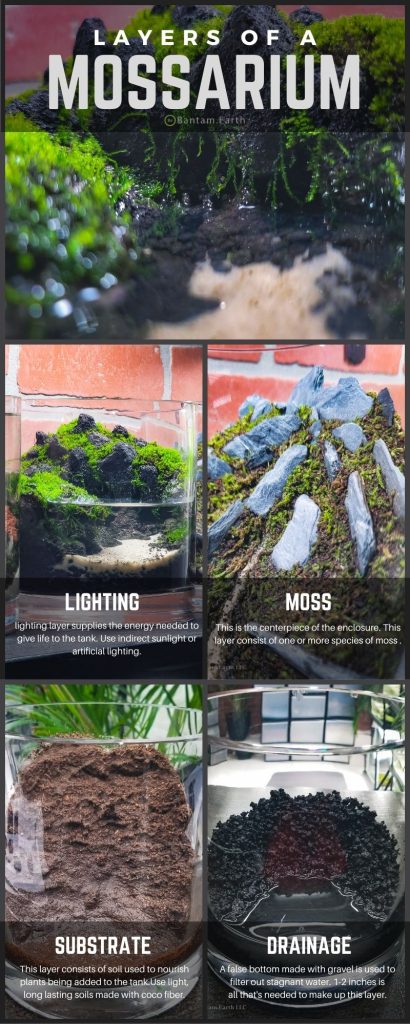

Different Types of mossariums
There are mainly three general types of mossariums to consider when building this type of terrarium.
It will either be the traditional terrain type setup, fully aquatic, or a combination of both.
The moss required will vary depending on the type of mossarium you decide to go with. The essential key layers will change based on the type of mossarium it is as well.


Moss Terrariums
Moss terrariums are usually what come to mind when thinking about the conventional mossarium.
This type of enclosure requires all the key layers we covered in the previous section except the substrate layer.
Moss can do exceptionally well without soil since it doesn’t have roots.
It’s common to find a mossarium that consists of a large rock or wood log as a base for moss to grow on, instead of soil.
If you are designing a substrate-less terrarium, be sure that the drainage layer is completely functional and the moss isn’t left sitting in stagnant water.
Air circulation will be vital to this setup so be sure to make sure fresh air is finding its way into the container frequently.
If this will be a closed terrarium type of setup, remove the lid a couple of times a week or install a fan near ventilation to allow humidity levels to lower if you notice condensation forming around the glass.
Moss Aquariums
Moss aquariums are a bit new to the hobby but just as rewarding. Aquatic mossariums consist of a lighting layer, a moss layer, as well as a substrate layer.
Drainage or air circulation won’t be a necessary factor with this setup since the tank will be completely immersed in water.
Humidity will not be an important aspect of a moss aquarium as well and one might consider making this a sealed container to retain evaporation.
Water changes should be virtually nonexistent since the particular moss will work as a natural filter making this a self-sustaining ecosystem.
Moss Paludarium
Moss paludariums are something we predict will become very popular shortly. The idea of combining the best of both worlds is not only amusing but aesthetically pleasing.
The lighting and moss are the only essential layers here. The substrate and drainage layers will depend on personal preference and the style of the overall design.
Air circulation will be vital for a moss paludarium.
Even though having aquatic features will create the desired humidity necessary for terrain moss, you will still ventilation of some sort to allow proper humidity regulation as well as airflow.
Mossarium Care Tips
Caring for a mossarium is pretty basic once the moss is established. Moss is a relatively hardy plant to care for but does require some upkeep.
Moss requires low pH levels, some light, and lots of moisture.
- Water parameters are something many might overlook when it comes to moss. Moss thrives in pH between 5.0 and 6.0… A healthy mossarium will need to be acidic for moss to absorb the necessary nutrients.
- Low indirect lighting or LEDs set to low will be the best-case scenario to mimic what it looks for in nature. Remember that moss grows in shaded areas in the wild. Direct sun or too much lighting will result in the moss burning and potentially drying out.
- Humidity and airflow will be another necessary aspect of your mossarium. Moss will absorb the majority of its nutrients from the water in the air since it doesn’t have roots. Airflow will allow fresh air to circulate new nutrients throughout the plant. Be very careful not to drown the moss in water either. Moss will not do as well sitting in standing water or humidity higher than 80%.


How To Revive Dried Moss
I think one of the most spectacular aspects of moss is its ability to regenerate. It’s like the Deadpool of plants! As long as it hasn’t been chemically treated, its spores will spawn under the right conditions.
There are records of moss found in herbariums, hundreds of years old, that would begin to regrow once given enough water and light.
If you are having trouble trying to spark the growth of brown or completely dried moss, try grinding it into powder and mixing it with buttermilk.
This will create a potent mixture of pancake-like batter you can paint or spray over the area you want to grow moss in.
Consistently adding low pH, sodium-free water, and light should produce growth within a couple of weeks.
This is also a great method when applying moss to soil-less surfaces like stone, brick, or concrete.
If you want to experiment outside the mossarium realm, try painting patterns or letters on a wall and watch as it slowly comes to life!
Different Types Of Moss
There are over 10,000 types of moss (Bryophyta) species found around the world.
When deciding on the ideal moss to stock your mossarium with, there are a few popular species we will cover today.
Mosses all have their own needs, so try picking a type that fits the overall design and style of your moss terrarium.
Best Types Of Moss For Terrariums
The best types of moss for terrariums will be terrain-based plants that like high humidity.
Here are the more popular types of mosses commonly found in home cultivation:
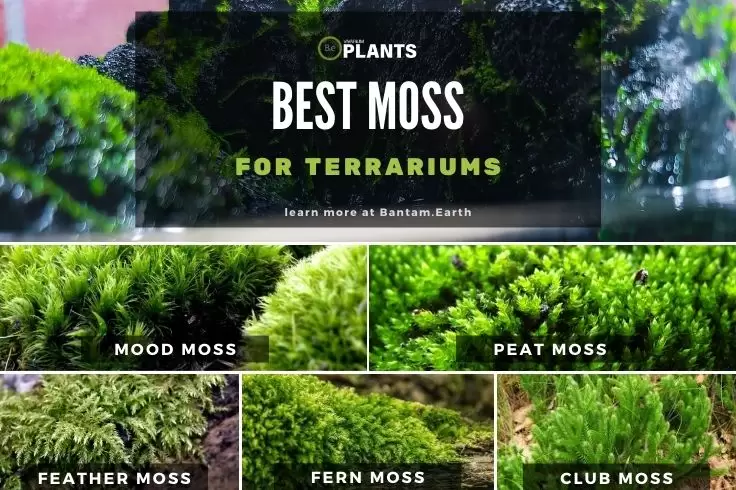

- Mood Moss (Dicranum Scoparium) – Also known as broom moss or fork moss, is a great accenting plant for critters to call home.
- Peat Moss (Sphagnum Moss) – Known for its ability to hold moisture, this moss also works well as an additive to the substrate.
- Feather Moss (ptilium Crista Castrensis) – Also known as forest moss, works well on non-substrate surfaces like wood, brick, and concrete.
- Fern Moss (Thuidium Delicatulum) – This fluffy moss closely resembles ferns and works as a great carpeting mat for woodland-styled terrariums.
- Club Moss (Selaginella Kraussiana) – Also known as Spike moss, has a very unique look bearing fern-like leaves. This moss will add an unusual aesthetic to any terrarium and can be paired nicely with leaf litter.
Best Types Of Moss for Aquariums
Planting moss in an aquarium can be a bit tricky. Since genuine moss won’t do well when submerged in water, one will have to resort to plants close to the moss family.
Here is a list of plants that aren’t part of the “Bryophyta” moss family but will still give an aesthetically pleasing look to a moss aquarium:


- Java Moss (Taxiphyllum Barbieri) – Arguably one of the most common aquarium moss in the hobby today… This moss is easy to care for and does a great job attaching to wood or stone surfaces.
- Phoenix Moss (Fissidens Fontanus) – Closely resembles the traditional moss we see above land. This clumpy, pillow-like moss is completely submerged as well as partially immersed.
- Christmas Moss (Vesicularia Montagnei) – Does well in corners and round stones. This moss can be a bit more demanding than others and will require more light and pruning.
- Liverwort (Monosolenium Tenerum) – Known as Pellia in the past, this plant is very close to the moss family. Being heavier than water, liverwort makes a good carpeting plant to have at the lower end of the mossarium.
- Crystalwort (Riccia Fluitans) – This is a floating plant that takes a bit of effort to maintain if you’re planning on tying it down to a hardscape. Crystalwort will add a very unique look to any well-lit mossarium with its sparkling look.
Where To Find Moss
Finding moss will depend greatly on your geographical location. If you live in an area where moss potentially grows, you can easily find it in shaded areas like woods or backyards.
I’ve been very fortunate, living here in South Florida, to find moss growing in my backyard and along walls.
There are also places available online that sell various moss types and can easily be shipped to you since moss is a relatively hardy plant.
If you are buying moss with the intent to grow it, be sure to avoid artificial moss or preserved moss as it will not be real and may have artificial coloring added to it which will wash out if put around water.
Best Mossarium Starter Kits
Creating the perfect mossarium requires the right materials and setup.
Whether you’re aiming for a minimalistic, low-maintenance design or a more complex, customizable ecosystem, we’ve got you covered with two top-tier Bantamarium kits designed to cater to your needs.
Decorative Mossarium Kits
The Bantamarium V1 Kits is perfect for those seeking a visually striking, low-maintenance mossarium.
These kits utilize preserved moss, allowing you to create a beautiful, artistic piece without the need for constant upkeep.
Ideal for those who appreciate the aesthetic appeal of a mossarium but prefer a setup that requires minimal care, the Bantamarium V1 kits are an excellent choice for decorative, non-living moss arrangements.
Bioactive Mossarium Kits
For hobbyists who want to create a thriving, bioactive ecosystem, the Bantamarium V2 Kits is the way to go.
These customizable enclosures offer the flexibility to scale and adapt, making them ideal for inhabitants who need a dynamic, living environment.
With the ability to choose from a variety of components and expand your setup over time, the Bantamarium V2 kits provide everything you need to create and maintain a vibrant, living mossarium that supports real plant and animal life.
Vivariums Similar To A Mossarium
The many other types of vivariums you will see out there are more than likely based on one of these core designs.
If you are building a vivarium to house a specific type of plant or animal, be sure to go with a design that closely fits their needs.
If you enjoyed this type of content, be sure to check out some of the other popular types of enclosures we’ve covered in the past:
Conclusion
A mossarium can be a fun twist on the typical terrarium project. Building a terrarium based on a specific species of plant is something that’s becoming more popular as the terrarium hobby evolves.
If you enjoyed our deep dive into moss terraria and would like to see another type of terrarium covered in a later post, be sure to let us know below!
Frequently Asked Questions
A Mossarium is a type of terrarium made out of a glass container such as a jar or vase and filled with a layer of pebbles on the bottom followed by soil, activated charcoal, and living plants like moss or other small, low–growing plants. The term Mossarium is derived from the combination of moss and terrarium.
No, moss terrariums do not need soil as a foundation. Just any foundation that would be well–draining, as moss prefers moist environments. Planting substrate with a neutral pH is recommended.
Mossariums need a few basic items to get started:
- A container, like a fish tank or terrarium, is large enough to hold the plants.
- Gravel or stones for drainage.
- Sphagnum moss or peat moss for moisture retention.
- A potting mix to provide nourishment.
- A variety of living mosses.
- Terrarium decorations or markers to create an interesting design.
Moss can last many years in a terrarium if proper moisture and lighting levels are maintained.
Water your moss terrarium every two weeks. Use a spray bottle to ensure that the water is evenly distributed across the moss. Avoid standing water, as this may cause the moss to rot.
Yes, moss terrariums need sunlight. A moss terrarium will thrive in indirect sunlight and should be placed near a window. But keep in mind that too much direct sunlight can cause the moss to dry out. Artificial lighting works just as well.
Yes, it is possible to over-water a moss terrarium. You should be careful not to keep the terrarium too wet as it can lead to mold, disease, and rotting roots. To avoid overwatering, make sure to use a soil mix with good drainage and irrigate the moss only when the soil is dry. Additionally, the frequency and amount of water should be adjusted depending on the climate and season.
Yes! Charcoal is an essential part of any moss terrarium. Charcoal helps regulate the pH levels in the terrarium and removes toxins while also absorbing and filtering odor molecules. Adding charcoal to the terrarium keeps the water and soil clean, making it essential for a healthy and vibrant moss terrarium.
Need More Help?
Didn't find the answers you were hoping for? Check out our troubleshooting archive for more helpful information.

